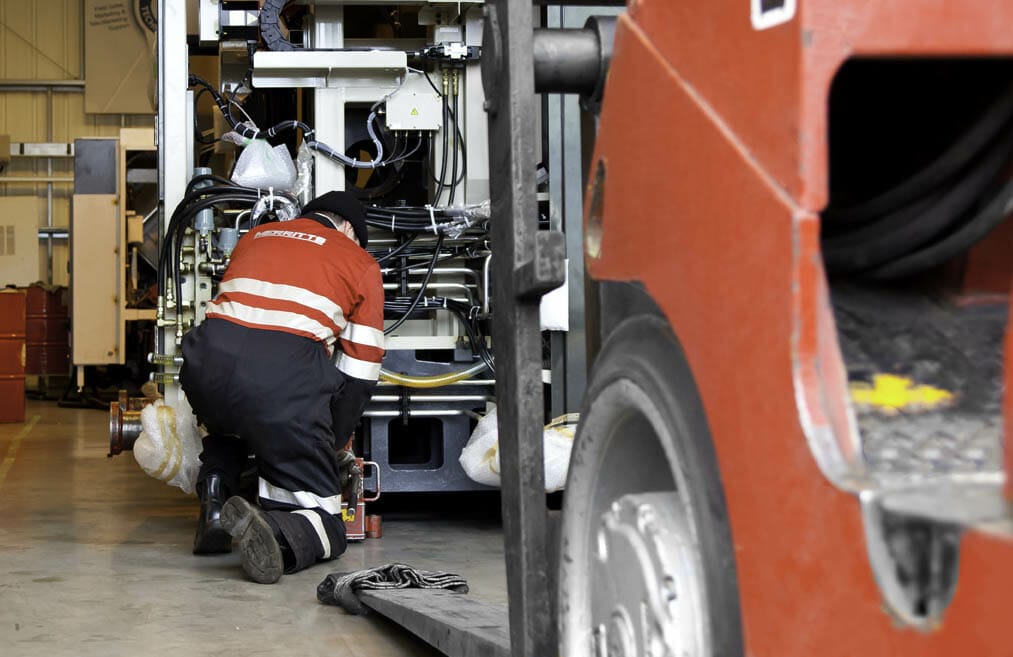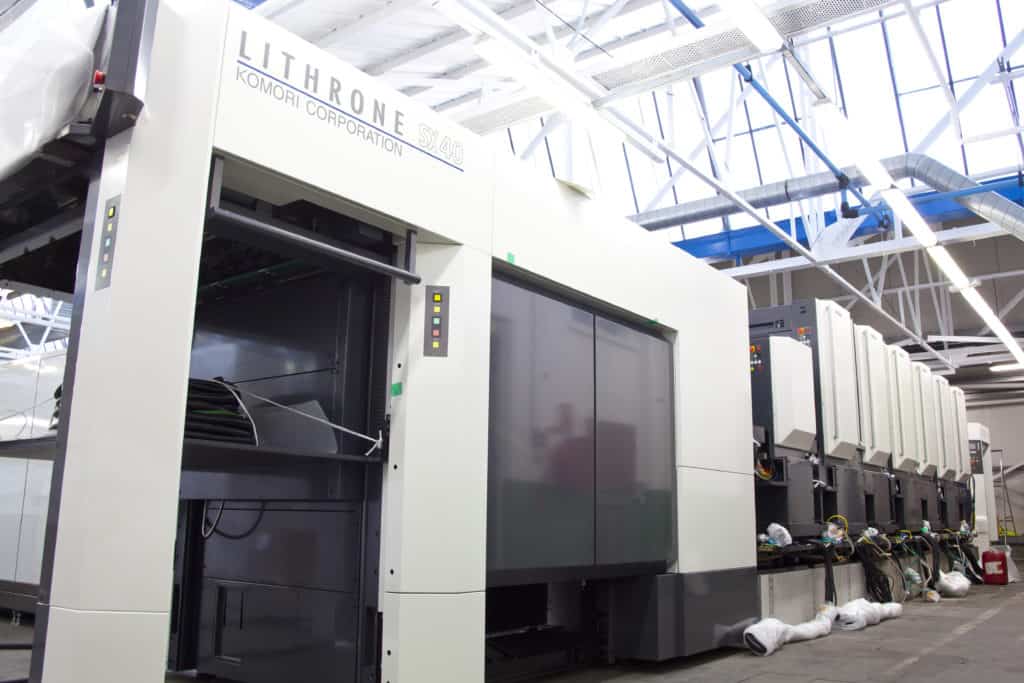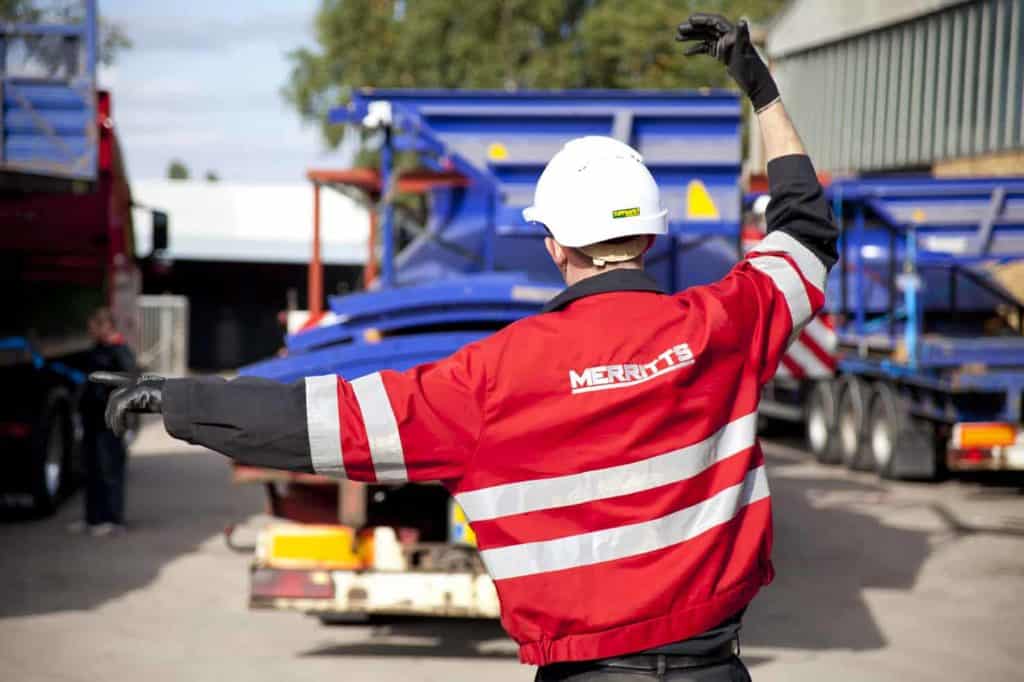Call FREE: 0800 046 9840
Email us: enquiries@merritts.uk.com


In this article we highlight how CDM 2015 needs to be applied within heavy machinery moving projects and how Merritts ensures operations will comply to the regulations. We will cover:
• A brief explanation of CDM regulations
• Highlight the type of factory construction projects that will need to factor CDM
• Health & Safety and CDM
• How Merritts ensure compliance on factory move projects
• Further reference reading

What are CDM 2015 Regulations?
The Construction (Design and Management) Regulations 2015 came into force on 6 April 2015. There intention is to govern the way construction projects of all sizes and types are planned in the UK to ensure safe design and working practices.
They are also sometimes referred to CDM Regulations or CDM 2015 and need to be considered for construction work which includes the carrying out of any building, civil engineering or ‘engineering construction work’. This means that the regulations will also encompass work carried out in many industrial, technology and manufacturing sectors.
Factory construction projects to consider:
This list is not exhaustive, but these are some examples of industrial and manufacturing related activities that may well fall into the scope of CDM 2015:
- Design and installation of new machinery
- Re-organising or redesigning machinery, processes or physical layouts within a facility
- Dismantling machinery or processes for repair, refurbishment or decommissioning
- Building an extension to, or demolishing part of a facility
- Modifying internal facility areas by installing (or removing) structures such as walls, adding levels or elevated walkways
- Installation, commissioning, maintenance, repair or removal of most mechanical, electrical, gas, compressed air, hydraulic, telecommunications, computer services if part of construction work.
Health & Safety and CDM 2015 – How Merritts ensure compliance
Merritts recognise and embrace its responsibility to provide a work environment which is safe for all employees, contractors, customers and members of the public. This objective is achieved through the development and communication of safe working practices and the provision of safe plant and equipment.
We demonstrate our commitment to health and safety prior to the commencement of works by providing you with a suite of documents to evidence our credentials.
This gives you confidence that your project will be carried out safely and in accordance with the required legislation. These include method statements, risk assessments, lift plans, personnel training records and plant and equipment inspection certificates.
Throughout all of our projects we ensure the adherence at all times with all health and safety regulations to which we need to comply.
Acting in role of Principal Contractor
When Merritts is appointed Principle Contractor we work alongside the Planning Supervisor from an early stage in the project notification process and in the compilation of the Health & Safety File.
The responsibilities we will complete include:
- Co-ordination of all contractors involved in the project (others trades included: electrical, mechanical, pipework, ducting, fire & sprinkler systems, general building and roofing)
- Making contractors aware of site safety arrangements via site specific inductions and toolbox talks
- Segregation (fencing off) and responsibility for the work area relating to the project
- Control of access to the work area and maintenance of daily registers
- Ensuring display of correct safety signage
- Co-ordination of method statements and risk assessments of all contractors and daily submission to client H&S department
- Maintenance of project Health and Safety File
- Monitoring use of correct PPE
- Verification of training records of contractors
- Provision of First Aid Appointed Person(s)
- Monitoring of project health & safety via safety audits, including accidents
- Chairing of daily meeting with client and representative from each trade to discuss progress and health and safety issues.
- Management of Permit to Work system within the project work area
- Liaison with client personnel, including team of commissioning engineers from Japan.
- Disciplinary control of all contractors in relation to safety non-compliance via an ‘card’ system
Further reference reading
These regulations are complex; therefore we have provided links to some interesting and informative related articles which you may find useful.
- Explanation on HSE website
- https://www.hse.gov.uk/construction/cdm/2015/index.htm
- Advice article by a principle contractor published online in Safety & Health Practitioner
- Other Merritts articles
If you are considering a heavy machinery removal, relocation, or installation project, need to temporarily store new or redundant heavy machinery, or simply need space to carry out servicing and maintenance, please get in touch.



